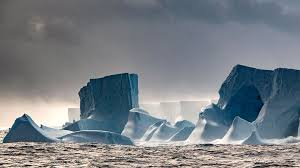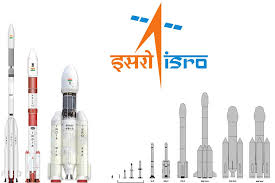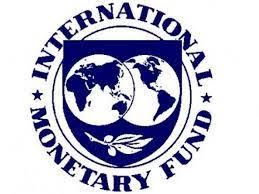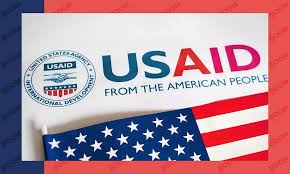Today’s Current Affairs: 8th March 2025 for UPSC IAS exams, State PSC exams, SSC CGL, State SSC, RRB, Railways, Banking Exam & IBPS, etc
Table of Contents
Carbon Intensity:

Carbon intensity measures the amount of carbon dioxide (CO₂) emitted per unit of output in a specific sector or economy. It helps track progress in reducing emissions while accounting for economic growth or production levels.
- The carbon intensity of the steel sector can be measured as the number of tonnes produced per tonne of CO₂ emitted.
- A country’s carbon intensity is measured by dividing Gross domestic product (GDP) growth per capita by CO₂ emissions.
- Carbon intensity plays a crucial role in assessing climate commitments under the Paris Agreement (2015) and reducing Emissions Intensity of its GDP by 45% by 2030, from 2005 level.
- Carbon intensity supports sustainable economic growth while lowering environmental impact.
Colossal A23a Iceberg Stuck:

The world’s largest iceberg, Colossal A23a (3,672 sq. km), is stuck about 70 km from South Georgia Island, likely avoiding ecological harm to its wildlife habitats.
- A23a broke from the Filchner Ice Shelf (Antarctica) in 1986 and remained stuck in the Weddell Sea for over 30 years and started drifting north in 2020 towards South Georgia Island.
- Nutrients released from the iceberg’s grounding and melting may boost marine food availability, supporting the regional ecosystem.
- The UK administers South Georgia (also claimed by Argentina) as a British overseas territory.
Icebergs: Icebergs are large floating masses of freshwater ice that break off (calve) from glaciers or ice shelves and drift in oceans or seas.
Semi-Cryogenic Engine:

ISRO recently successfully conducted the hot test on a semi-cryogenic engine (SE2000), coming closer to finalising the crucial cryogenic stage.
- A semi-cryogenic engine (SCE) is a liquid rocket engine that uses liquid oxygen (LOX) as an oxidizer and refined kerosene as fuel.
- The Indian Space Research Organisation (ISRO) is developing a semi-cryogenic engine with a thrust of 2000 kN to power the booster stages of future heavy-lift launch vehicles. This engine utilizes a combination of liquid oxygen (LOX) and refined kerosene (RP-1) as propellants.
- The semi-cryogenic engine offers several advantages over traditional cryogenic engines, including:
- Higher Density Impulse: The LOX-kerosene combination provides a higher density impulse compared to LOX-liquid hydrogen, resulting in improved performance.
- Cost-Effectiveness: Kerosene is more cost-effective and easier to handle than liquid hydrogen, reducing overall mission costs.
- Operational Efficiency: Kerosene can be stored at ambient temperatures, simplifying storage and handling requirements.
- The development of this engine is expected to enhance the payload capacity of ISRO’s existing launch vehicles, such as the LVM3, and is also planned for use in future launch vehicles like the Next Generation Launch Vehicle (NGLV).
- Unlike a cryogenic engine, a semi-cryogenic engine uses refined kerosene instead of liquid hydrogen. The liquid oxygen is used as an oxidiser.
- The advantage of using a semi-cryogenic engine is that it requires refined kerosene, which is lighter than liquid fuel and can be stored at a normal temperature.
IMF Report on India’s Financial System:

The International Monetary Fund (IMF), in its report titled “India Financial System Stability Assessment”, has flagged concerns about the stress in Non-Banking Financial Companies (NBFCs) and its potential risks to India’s financial system.
- 63% of power sector loans in FY 2024 were from the three largest Infrastructure Financing NBFCs, up from 55% in 2019-20.
- 56% of NBFC lending is financed by market instruments (mutual funds, and corporate bond markets), with the remaining from bank borrowings.
- State-owned NBFCs like Indian Renewable Energy Development Agency (IREDA) are at higher risk due to their exposure to the power sector which face delays, and financial stress. Without expected revenues, NBFCs asset-liability mismatches that hinder repayments.
- NBFCs can’t accept demand deposits, lack deposit insurance, and have no direct Reserve Bank of India (RBI) liquidity access, making them vulnerable to financial stress.
- The report warns that geopolitical risks and miscalculated monetary policies by major central banks could lead to rising interest rates and slow economic growth, affecting both NBFCs and banks.
- IMF stress tests indicate that Public Sector Banks (PSBs) may struggle to maintain the 9% Capital Adequacy Ratio (CAR) if stagflation (slow growth + high inflation) occurs.
- RBI mandates 12% CAR for PSBs and 9% for scheduled commercial banks.
- Nearly 80% of Indian adults have financial accounts, supported by an extensive banking network and digital infrastructure like Unified Payments Interface (UPI).
- The rapid rise of retail investors in equities has transformed India into one of the world’s largest equity options trading markets.
- India’s financial system assets (including banks, NBFCs, insurance companies, mutual funds, and pension funds) amount to nearly 190% of GDP, with banks holding 60% of total financial assets.
USAID Funding Cuts and Their Impact on India:

USAID has been a key contributor to India’s health, environmental, and technological sectors, providing $2.8 billion in aid since 2001.
- The US administration’s January 20, 2025, executive order aims to halt foreign aid, significantly impacting USAID-supported programs in India. A U.S. Supreme Court ruling on March 5, 2025, upheld the decision, raising concerns about the future of critical health and development projects.
- India received $228 million in 2022, ranking USAID fourth among global donors.
- Health & Population Programs Funding focused on TB, HIV/AIDS, maternal health, and Covid-19, with $180 million allocated in 2022.
- USAID invested $17.12 million in 2024 for clean air, water, and sustainable development projects.
- The U.S. government reassessed 5,800 foreign aid projects, retaining only 500 to cut spending.
- A U.S. Federal Court stay on February 13, 2025, was overturned by the Supreme Court on March 5, 2025.
- Programs like Breaking the Barriers (TB awareness in India) and HIV/AIDS prevention under PEPFAR face discontinuation.
PM Modi Conferred ‘Honorary Order of Freedom of Barbados’:
Prime Minister Narendra Modi has been honored with the ‘Honorary Order of Freedom of Barbados’, a prestigious award recognizing his strategic leadership and assistance during the COVID-19 pandemic. Union Minister of State for External Affairs Pabitra Margherita accepted the award on his behalf at a ceremony held at Government House in Bridgetown, in the presence of Barbadian President Dame Sandra Mason, Prime Minister Mia Amor Mottley, and Foreign Minister Kerrie Symmonds
PM Modi Announces Asiatic Lion Population Estimation:
Prime Minister Narendra Modi chaired the seventh meeting of the National Board for Wildlife (NBWL) at Sasan, Junagadh, Gujarat. The meeting, attended by Union Minister of Environment, Forest and Climate Change Bhupender Yadav and other NBWL members, focused on critical wildlife conservation efforts, including the upcoming Asiatic lion population estimation and the launch of various conservation initiatives.One of the key highlights of the meeting was the announcement of the 16th Asiatic Lion Population Estimation, scheduled for May 2024. The estimation will provide crucial insights into the current status of Asiatic lions, their population growth, habitat conditions, and conservation challenges.
SEBI’s Total Income Rises 48% to ₹2,075 Crore in 2023-24:
The Securities and Exchange Board of India (SEBI) recorded a 48% year-on-year growth in its total income, reaching ₹2,075 crore in FY 2023-24. The increase was primarily driven by higher earnings from fees and subscriptions. SEBI’s fee income surged significantly compared to the previous fiscal year, reflecting increased contributions from stock exchanges, market participants, and companies. Additionally, the regulator’s investment income and other income also witnessed an uptick. Despite the rise in revenue, SEBI’s total expenditure increased as well, reaching ₹1,006 crore. SEBI also reported substantial funds in its general fund, Investor Protection & Education Fund (IPEF), and Disgorgement Fund.
SIDBI and Federal Bank Partner to Strengthen MSME Financing:
The Small Industries Development Bank of India (SIDBI) and Federal Bank have signed a Memorandum of Understanding (MoU) to enhance financial support for micro, small, and medium enterprises (MSMEs). This collaboration aims to boost the MSME ecosystem by offering various financial services, including project finance, machinery and equipment loans, working capital support, and loans against property. The partnership will also explore joint financing options to extend credit facilities to MSMEs, ensuring easier access to funds for their growth and development. The announcement aligns with Prime Minister Narendra Modi’s commitment to strengthening the MSME sector, recognizing it as the backbone of India’s manufacturing and industrial growth.
China Increases Defence Budget by 7.2% in 2025:
China has announced a 7.2% increase in its defence budget for 2025, continuing its efforts to modernize and expand its military capabilities. The budget, which amounts to approximately $245 billion, was revealed at the National People’s Congress (NPC), the annual legislative meeting of the country. With this move, China aims to reinforce its territorial claims, enhance military technologies, and counter the United States’ military presence in Asia
PhonePe Launches ‘Insuring HEROES’ Campaign for International Women’s Day 2025:
PhonePe, one of India’s leading digital payment platforms, has launched its ‘Insuring HEROES’ campaign ahead of International Women’s Day (March 8, 2025). The initiative aims to promote financial security among women by offering exclusive discounts on select term life and health insurance plans. Available on the PhonePe app until March 9, 2025, the campaign provides discounts of up to 30% on term life insurance and 15% on health insurance.
HDFC Bank Signs MoU with Indian Air Force and CSC Academy; Launches Project HAKK:
HDFC Bank, under its Parivartan initiative, has signed a Memorandum of Understanding (MoU) with the Indian Air Force (IAF) and CSC Academy to launch Project HAKK (Hawai Anubhavi Kalyan Kendra). This initiative is designed to support defence pensioners, veterans, and their families by providing financial services, skill development, and economic inclusiveness. The MoU was signed in the presence of senior officials from HDFC Bank, the Indian Air Force, and CSC e-Governance Limited.
India Ranks 4th in Global Wealth Rankings: Knight Frank’s Wealth Report 2025
The London-based global property consultancy firm, Knight Frank, released the 19th edition of ‘The Wealth Report 2025’, providing a comprehensive analysis of the global distribution of wealth. The report highlights the growing number of High Net-Worth Individuals (HNWIs) worldwide, with India securing the 4th position globally, boasting an estimated 85,698 HNWIs in 2024, marking a 6% increase from the previous year.With 3.7% of the world’s wealthy population, India continues to strengthen its presence among the top wealth-generating nations. The United States of America (USA) remains the leader with 905,413 HNWIs, followed by China (471,634 HNWIs) and Japan (122,119 HNWIs).




